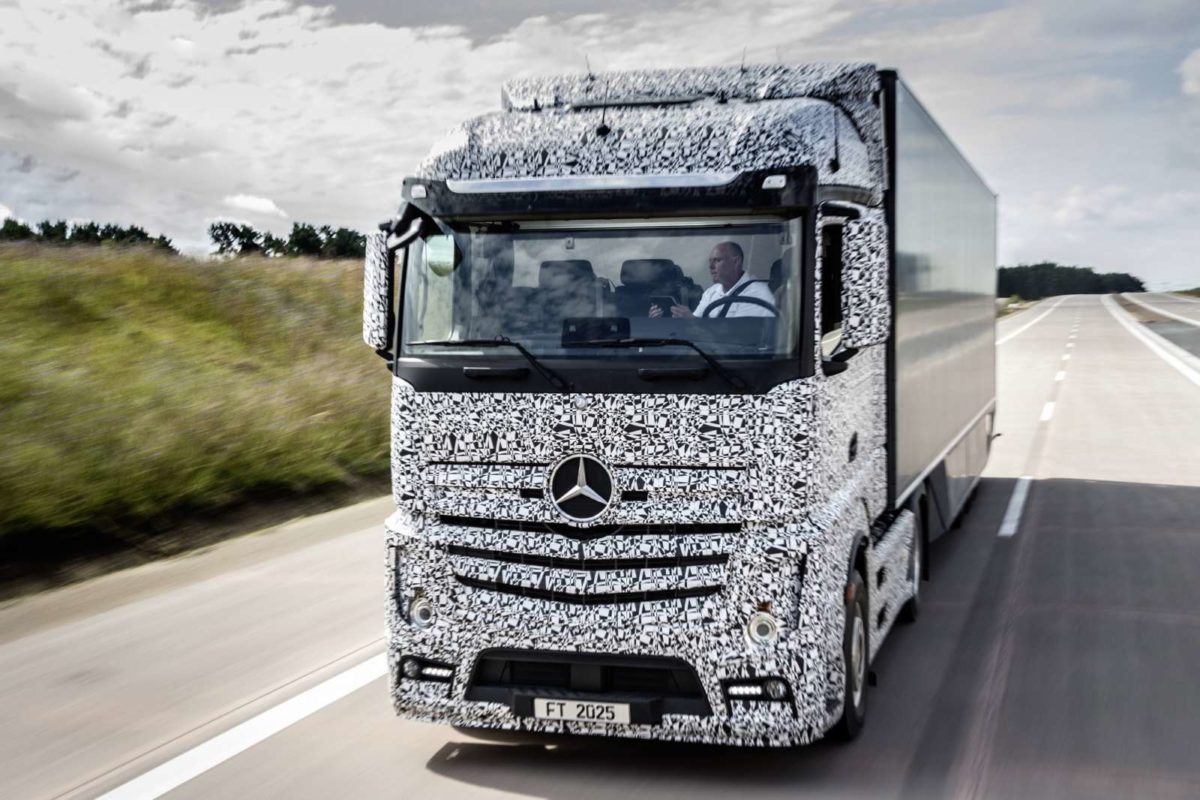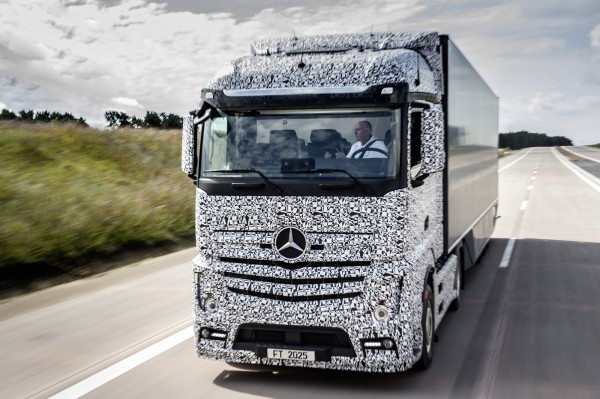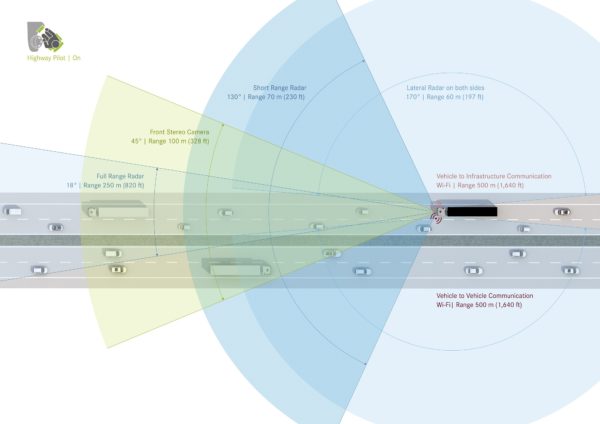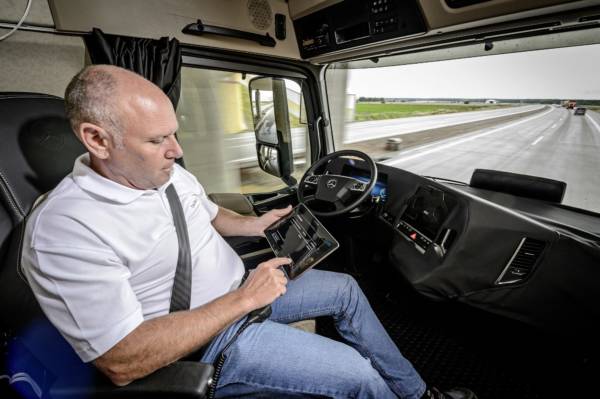Truckers always have a tough time while driving. They have to watch out for their huge vehicle along with other small ones which are difficult to spot on various occasions. The amount of energy that is consumed in long distance hauls is another issue that the truckers face. But a solution is just around the corner.
Commercial Vehicles manufacturer Daimler AG showcased the future of transportation with a representation of a leap in technology that would change the way the world trucks’ in future.
The company introduced the “Highway Pilot” autonomous driving technology which lets the driver attends to other matters during the journey, and only intervene when required. The Highway pilot allows the driver to take rest during the journey while a computer system drives the vehicle.
Just after starting off a message lights up displaying “Highway Pilot available” in the instrument cluster. Using the installed map and the markings on the 3.5-metre wide motorway lane, the technology of the Mercedes-Benz Future Truck 2025 has identifies the vehicle’s position on the A14 autobahn near Magdeburg.
Once the system is ON, the driver can take his hands off. The semitrailer combination continues to travel at exactly the set speed, in the centre of the right-hand lane. Using the truck’s intelligent sensors and computing power, the steering carries out slight corrections by itself.
All the driver has to do is to press a button on the seat armrest. Once the system starts functioning, the driver’s seat immediately moves backwards, and pivots to the right by 45 degrees for a comfortable seating position. The driver is able to stretch his legs in comfort, as if sitting in an armchair. He is able to reach the steering wheel, but the brake pedal only by an artistic foot contortion.
The “Highway Pilot” uses a combination of radar sensors at the front and sides, a stereo camera behind the windscreen, precise three-dimensional maps and Vehicle to Vehicle (V2V)/Vehicle to Infrastructure (V2I) communication – the exchange of information between the truck and other vehicles, and with the world outside the motorway to navigate the vehicle.
The conventional instrument cluster has been replaced by a high-resolution, graphic colour display. On the left the display shows the fuel and AdBlue levels, as well as the engine speed, and on the right the driving time and social data. In the centre it shows the vehicle speed in precise digital form, and also in analogue form using a stylised dial instrument.
When the “Highway Pilot” is activated, the information in the display is reduced to a minimum and all the data appear on the screen of the tablet computer in the centre console. This is now the truck’s central control and communication instrument. The developers now no longer refer to the interface between the driver and truck as “instruments”, but as the Human Machine Interface or Human Machine Interaction, or HMI for short. This is the centrepiece of the Mercedes-Benz Future Truck 2025, and is presently still a disguised, near-series study.
The semitrailer always keeps a distance of 60 m from the vehicle ahead and stays precisely on course. The company claims that this technology corrects its course more rapidly and safely than any human driver.
In the mean time the driver can use the tablet to acknowledge an assignment that has just come in by V2I communication, or take a look at the proposed route in navigation mode and choose a suitable service station for the next break. The menu for the day appears on the screen. So the driver can take the opportunity to pre-order the meal of his choice and reserve a parking space. The system also keeps a track of friends or colleagues logged-in on the same route.
Safety has been the priority. Although the system is in operation, the truck would not overtake any vehicle without the drivers orders. In a case where overtaking is worthwhile, the driver pivots the seat into the driving position, takes over manual control, indicates and changes lane to overtake. Returning to his lane, he can then hand control back to the “Highway Pilot”. Important note: The driver of the autonomous truck is always in full control, and can always override the technology by steering, braking or accelerating as required.
Truckers do have a tough time driving the huge vehicle on straight highways. Distractions while driving can cause accidents and damage to the driver as well as other vehicles on the road. Mercedes’ technology assures safer and more comfortable driving conditions for the truckers.




